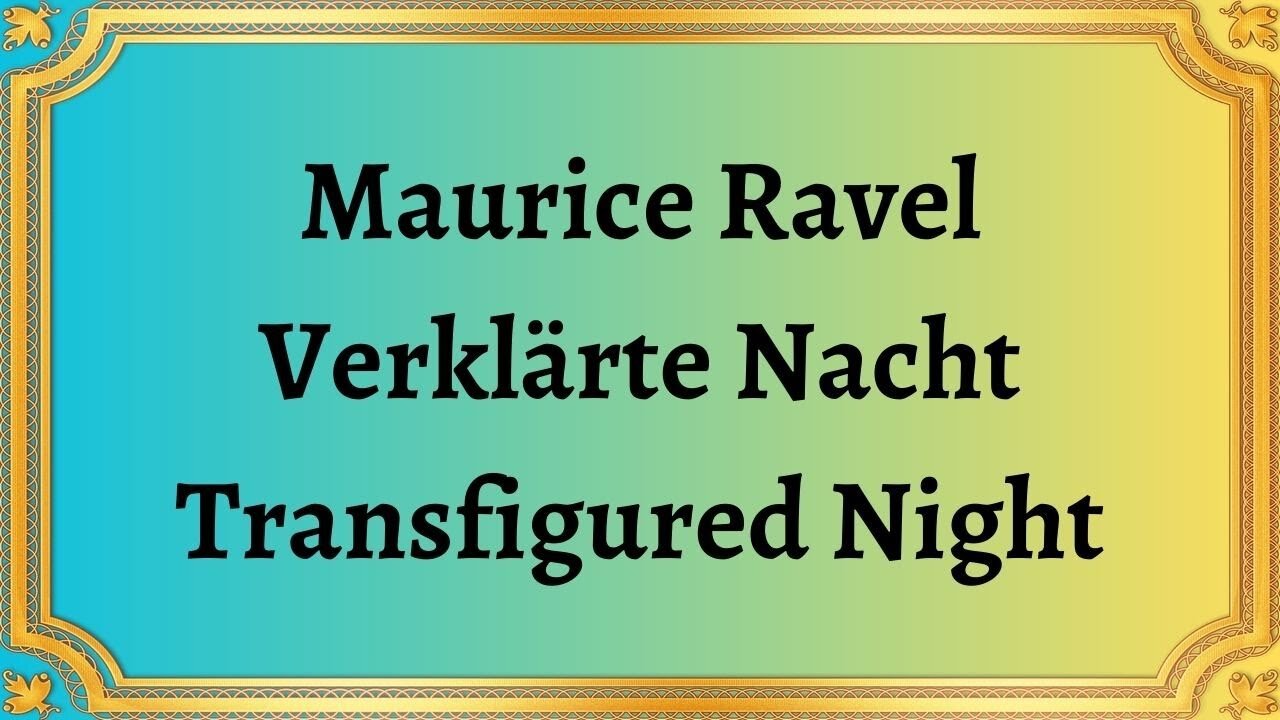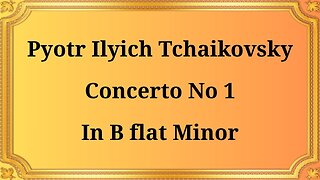Premium Only Content

Maurice Ravel Verklärte Nacht Transfigured Night
Publication date 1950
The Philadelphia Orchestra; Eugene Ormandy; The Temple University Choirs; Elaine Brown
Maurice Ravel was a renowned French composer who left an indelible mark on classical music with his unique approach to composition. One of his most significant works is "Verklärte Nacht" or "Transfigured Night," a musical piece that showcases Ravel's profound sensitivity and elegance in creating intricate and emotionally engaging melodies.
"Verklärte Nacht" was inspired by a poem by Richard Dehmel, a German poet. The poem describes a romantic encounter between a man and a woman as they walk through the night, highlighting the dilemma of the woman's pregnancy and the possibility of her desire for abortion. Ravel's interpretation of the poem showcases his remarkable skill in capturing the nuances of human emotion through music.
The composition is divided into five sections. It begins with a somber cello solo, followed by the entrance of violins, violas, and eventually the harp. The melody is then repeated in a higher key, adding layers of complexity and tension to the composition. The harmonies that follow are both dissonant and yet profoundly peaceful, reflecting the emotional conflict within the poem's narrative.
The second section is marked by the entrance of violins, playing a passionate melody that contrasts the somber tone of the cello in the previous section. The melody transforms into a complex and intricate theme, showcasing Ravel's talent in creating memorable melodies that resonate with the listener's emotions.
The third section is marked by the entrance of cellos and basses, adding depth and richness to the composition. The chorale-like melody is introduced, with the violins returned to play counterpoint to the melody. The dissonant harmonies continue, adding to the emotional complexity of the music.
The fourth section features the emergence of the main theme, played by the violins and cellos simultaneously. The melody is then passed to the violas and violins, and the music gradually builds in intensity, creating a magnificent climax.
The piece concludes with a return to the somber cello theme from the beginning, ending on a note of melancholy and a sense of acceptance of life's complex issues.
In conclusion, Ravel's "Verklärte Nacht" is a masterpiece of emotional complexity and musical sophistication. The composition is a reflection of the human experience, capturing the nuances and conflicts within the poem's narrative through Ravel's superb orchestration, intricate melody, and harmonic complexity. It is a work of art that embodies
You have the opportunity to support the channel: https://destream.net/live/RadSiarAl/donate
-
 31:06
31:06
Classical music_Music Inspiration
1 month agoPyotr Ilyich Tchaikovsky Piano Concerto No. 1 in B-flat minor
581 -
 1:56:56
1:56:56
MattMorseTV
2 hours ago $1.66 earned🔴Trump's MASSIVE Press Briefing UPDATE.🔴
2.43K21 -
 LIVE
LIVE
Right Side Broadcasting Network
1 hour agoLIVE: Make America Healthy Again Commission Meeting - 9/9/25
1,383 watching -
 1:57:40
1:57:40
The Charlie Kirk Show
3 hours agoWhere Do Rights Come From? + Lions and Scavengers + Midway Blitz | Shapiro, Yoo, McLaughlin | 9.9.25
30K11 -
 1:19:45
1:19:45
The White House
5 hours agoPress Secretary Karoline Leavitt Briefs Members of the Media, Sep. 9, 2025
14.4K13 -
 1:24:12
1:24:12
Mark Kaye
2 hours ago🔴 ICE Invades Chicago- Operation Midway Blitz
7.13K -
 LIVE
LIVE
Badlands Media
12 hours agoGeopolitics with Ghost Ep. 37- Sept. 9, 2025
919 watching -
 4:07
4:07
Michael Heaver
3 hours agoBattered Germany Quickly Erupting Into PANIC
3.89K3 -
 1:05:32
1:05:32
Timcast
3 hours agoNepal's Government COLLAPSES, Gen Z REVOLUTION Over Social Media Ban, 19 Dead
96.3K81 -
 2:06:23
2:06:23
Steven Crowder
5 hours agoBrian Stelter's Delusional Response to the Charlotte Stabbing is Everything Wrong With Media
267K254